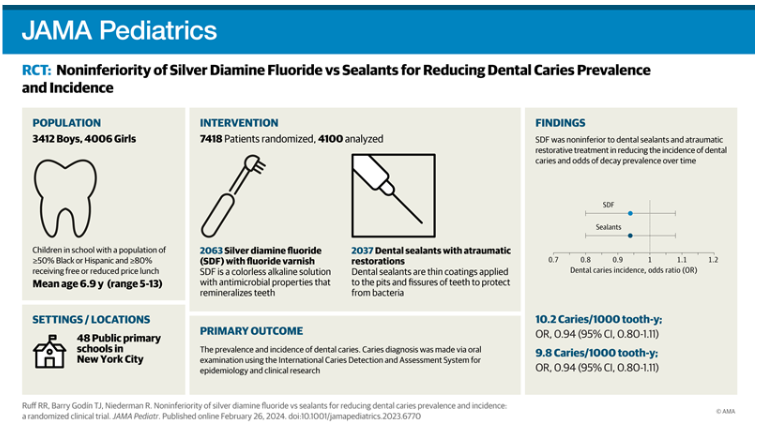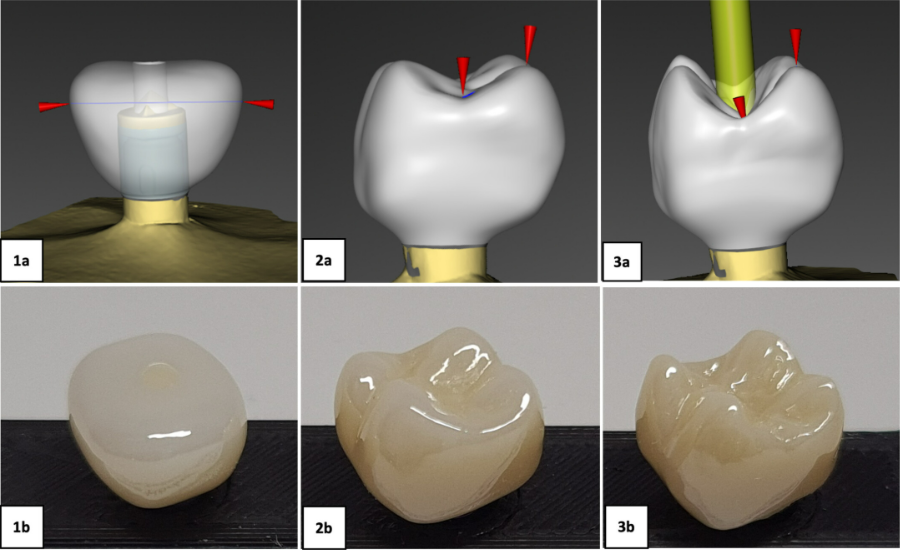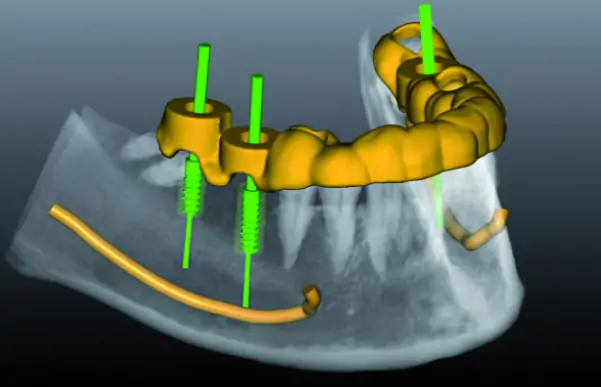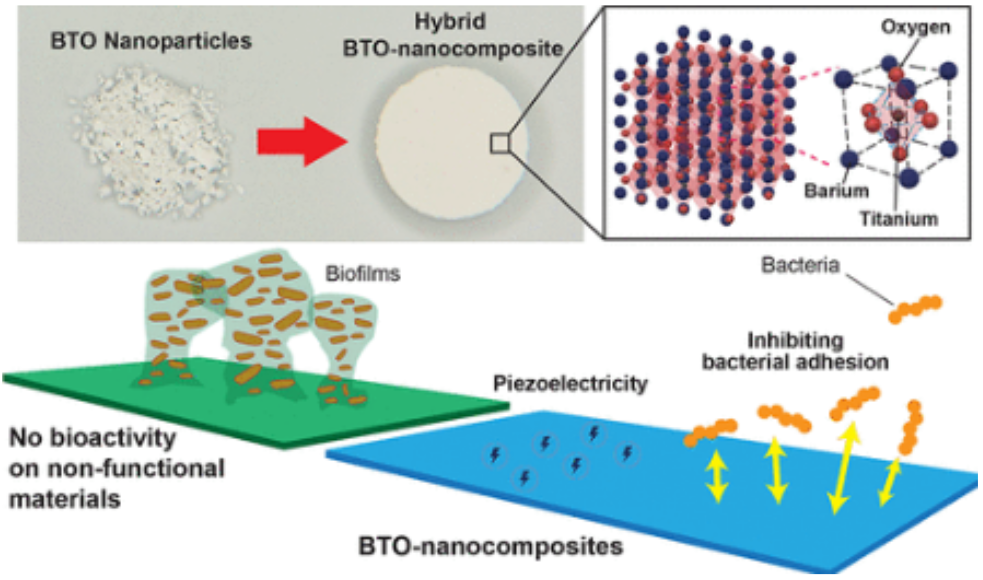Revolutionizing Dental Care: Silver Diamine Fluoride vs. Sealants
In the realm of dental care, advancements continue to reshape traditional practices, offering innovative solutions that are not only effective but also cost-efficient. A recent study conducted by researchers at NYU College of Dentistry has shed light on a groundbreaking alternative to dental sealants – Silver Diamine Fluoride (SDF). This liquid marvel has proven to be as effective as sealants in preventing tooth decay, presenting a promising avenue for enhancing oral health outcomes, particularly in school-based cavity prevention programs.
Understanding the Challenge: The Prevalence of Dental Cavities in Children
Dental cavities remain a prevalent chronic disease among children, often leading to pain, school absences, and compromised academic performance. Recognizing the urgency of addressing this issue, the Centers for Disease Control and Prevention (CDC) advocate for proactive measures, including the utilization of school sealant programs. These programs involve the application of a protective coating to the teeth’s surface, serving as a barrier against decay. While sealants have been a staple in preventive dental care, the emergence of SDF introduces a paradigm shift in cavity prevention strategies.
.
.
.
Unveiling Silver Diamine Fluoride: A Game-Changer in Dental Care
Silver Diamine Fluoride, initially approved by the FDA for treating tooth sensitivity, has garnered attention for its remarkable efficacy in combating cavities. Unlike sealants, which entail a time-consuming application process, SDF offers a swift and cost-effective solution. This liquid is applied to the tooth’s surface, targeting decay-causing bacteria and facilitating remineralization to thwart further deterioration. Dr. Richard Niederman, the study’s senior author, emphasizes SDF’s potential to revolutionize dental care by mitigating the need for invasive procedures such as drilling and filling.
The CariedAway Study: A Landmark Exploration in Cavity Prevention
Led by researchers at NYU College of Dentistry, the CariedAway study represents the largest endeavor in school-based cavity prevention. Spanning four years and encompassing over 4,000 elementary school students, this study sought to compare the efficacy of SDF versus traditional sealants. The findings, published in JAMA Pediatrics, underscored the equivalence of SDF and sealants in preventing cavities, reaffirming the viability of SDF as a formidable contender in the realm of preventive dentistry.
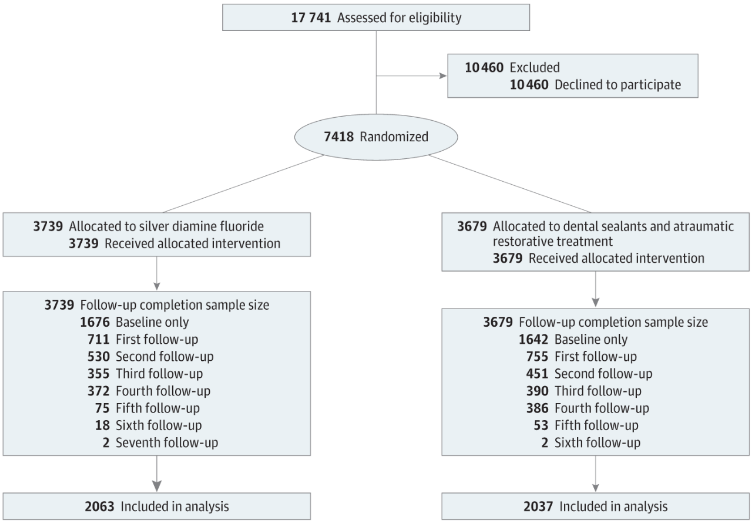
The average time elapsed between observations across all participants was as follows. First follow-up, 507 days; second, 300 days; third, 195 days; fourth, 169 days; fifth, 171 days; sixth, 170 days; seventh: 159 days. Any study dropout was considered and logged as lost to follow-up. No other reasons were documented, as the child most likely left the school.
Longitudinal Insights: SDF’s Enduring Impact on Oral Health
The longitudinal analysis conducted as part of the CariedAway study yielded compelling insights into the sustained effectiveness of SDF. Over the four-year period, both SDF and sealants demonstrated consistent cavity prevention outcomes, offering a glimmer of hope for addressing the pervasive issue of dental decay. Notably, SDF showcased its preventive prowess by thwarting the onset of cavities, underscoring its potential to avert dental woes before they escalate.
Expanding the Scope: Leveraging SDF for Oral Health Equity
Beyond its efficacy in cavity prevention, SDF presents a gateway to promoting oral health equity by expanding access to care. The study’s findings suggest that SDF administration by registered nurses, including school nurses, yields comparable outcomes to dental hygienists. This revelation underscores the untapped potential of leveraging existing healthcare infrastructure to deliver preventive dental services, thereby bridging gaps in access and addressing disparities in oral health outcomes.
Embracing Innovation: Towards a Brighter Future in Dental Health
As we navigate the landscape of dental care, embracing innovation is paramount to realizing a future where oral health disparities are mitigated, and preventive measures are accessible to all. The integration of SDF into school-based cavity prevention programs heralds a new era in preventive dentistry, offering a potent tool to combat the scourge of dental decay. With further research and widespread adoption, SDF has the potential to revolutionize oral health outcomes and usher in a brighter, cavity-free future for generations to come.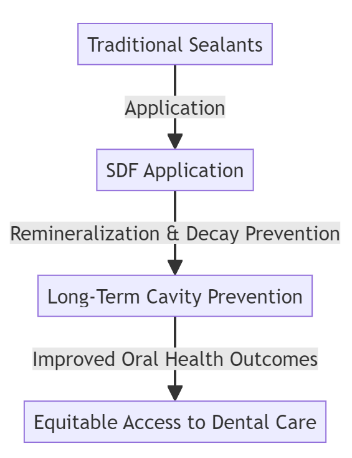
In conclusion, the efficacy of SDF in preventing and arresting cavities underscores its transformative potential in the realm of preventive dentistry. By harnessing the power of innovation and leveraging existing healthcare infrastructure, we can pave the way for a future where dental decay is no longer a prevalent threat, but rather a preventable condition.

